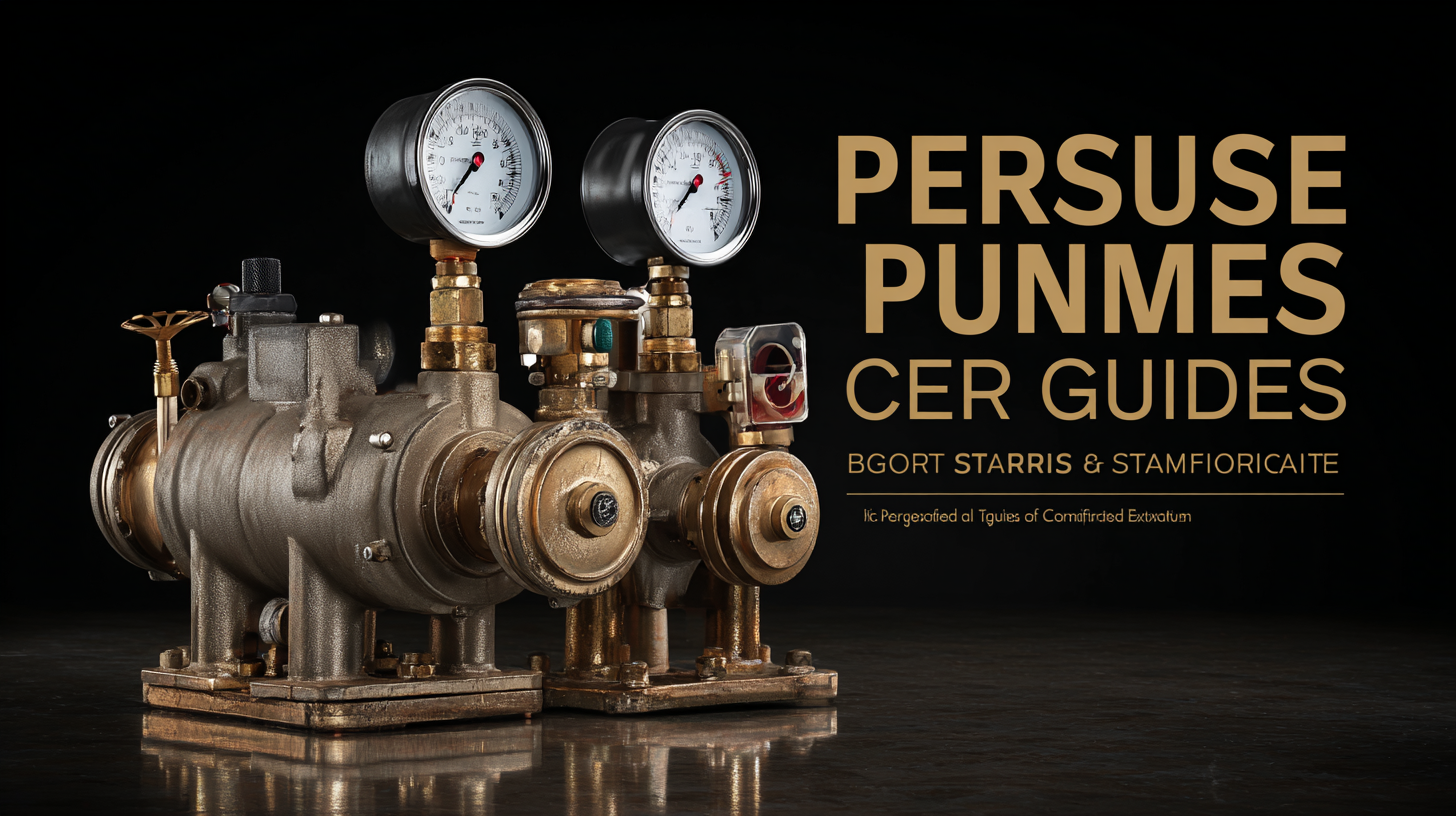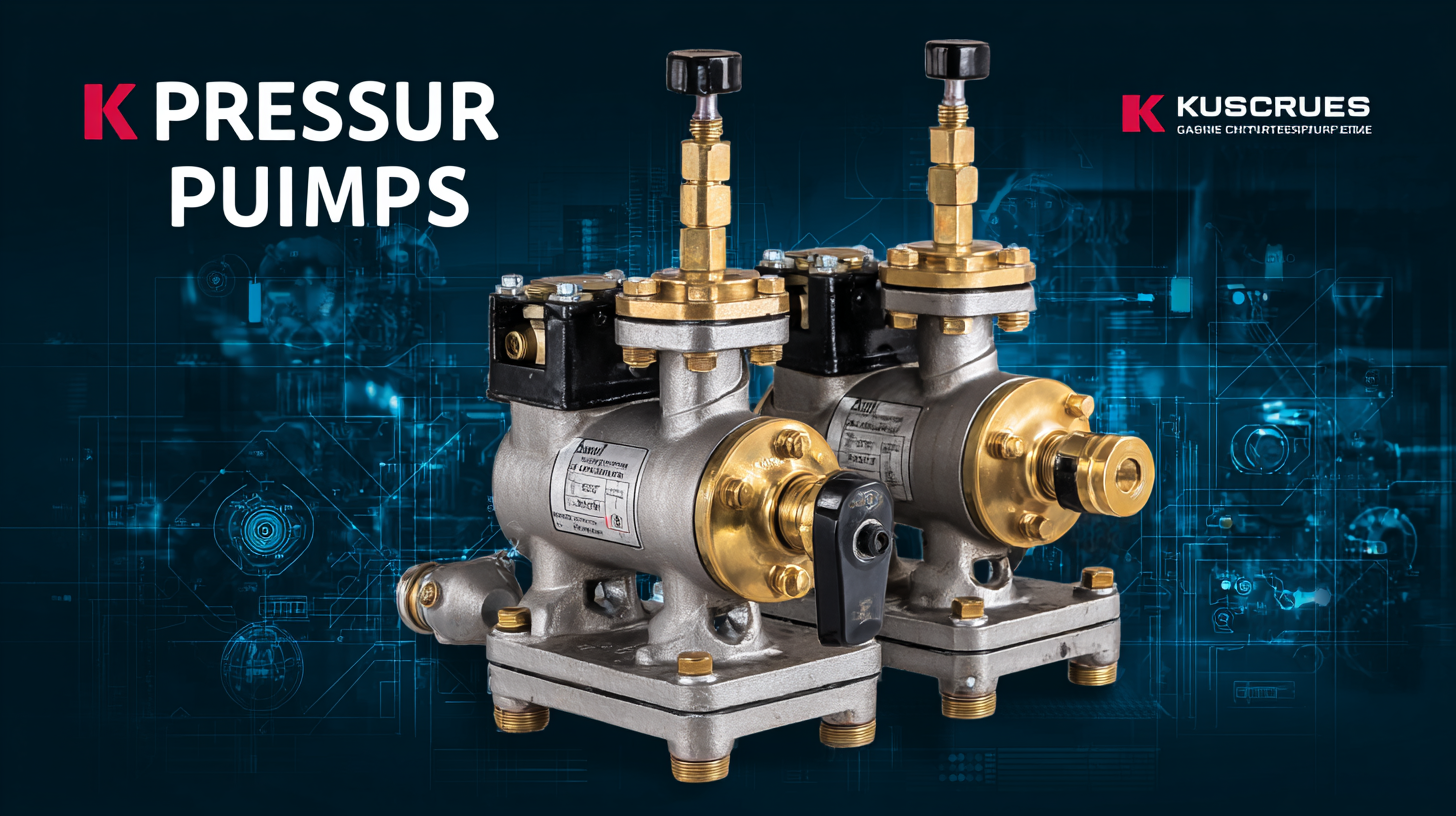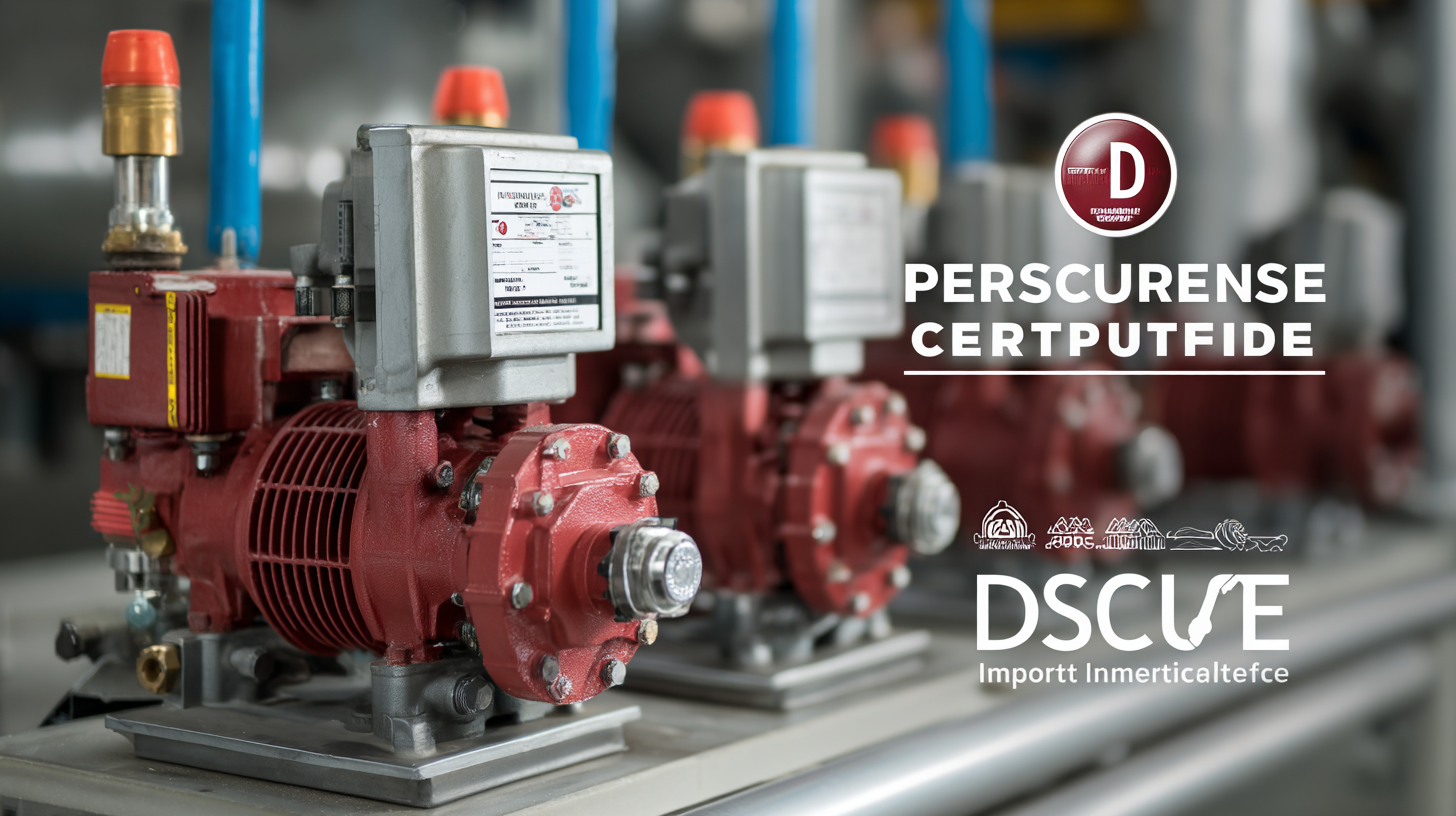- Ambawadi, Ahmedabad, Gujarat
- View Mobile Number
Navigating Global Standards for Best Pressure Pumps Compliance and Import Certification Guide
In an ever-evolving global marketplace, understanding the compliance and import certification requirements for Pressure Pumps is crucial for manufacturers and importers alike. According to a report by the International Pump Manufacturers Association, the global market for pressure pumps is projected to reach $45 billion by 2025, with a compound annual growth rate (CAGR) of 5.2%. As industries increasingly prioritize efficiency and sustainability, adherence to global standards has become more important than ever. In this blog, we will explore the technical specifications and certifications necessary for ensuring your pressure pump products meet industry regulations. By navigating these complex compliance landscapes, businesses can not only enhance product quality and safety but also tap into emerging markets that demand top-tier pressure pump solutions.

Case Studies of Pressure Pumps in Diverse Industries
In diverse industries, the application and regulation of pressure pumps vary significantly, showcasing the importance of compliance with global standards. For instance, according to a report by Market Research Future, the global pressure pump market is projected to grow at a CAGR of 6.3% from 2021 to 2027, propelled by the rising demand in sectors like oil and gas, agriculture, and water treatment.
 In the oil and gas industry, where pressure pumps are crucial for hydraulic fracturing processes, compliance with API standards is paramount. Case studies reveal that companies that adhere to these standards not only enhance operational efficiency but also mitigate environmental risks tied to improper pressure management.
In the oil and gas industry, where pressure pumps are crucial for hydraulic fracturing processes, compliance with API standards is paramount. Case studies reveal that companies that adhere to these standards not only enhance operational efficiency but also mitigate environmental risks tied to improper pressure management.
In the agricultural sector, pressure pumps play a vital role in irrigation systems, directly impacting crop yields. A study conducted by the Food and Agriculture Organization (FAO) highlighted that adopting high-efficiency pressure pumps can lead to water savings of up to 40%. However, for agricultural equipment manufacturers, navigating the complexities of ISO compliance and local regulations remains a challenge. The case of an European manufacturer who faced significant delays due to non-compliance with CE certification underscores the importance of having a robust import certification strategy that aligns with both domestic and international standards to capitalize on market opportunities effectively.
5 Key Global Standards for Pressure Pumps Compliance
When it comes to ensuring compliance for pressure pumps on a global scale, businesses must navigate multiple standards that are essential for regulatory adherence. Here are five key global standards that can guide manufacturers in demonstrating conformity to safety and performance requirements:
- ISO 9001 for quality management systems,
- ISO 14001 for environmental management,
- API 610 for centrifugal pumps,
- CE marking for products sold in the European market,
- ASME B73 for industrial process pumps.
Tip: Always stay updated with the latest amendments in these standards. Engaging with professional organizations can provide insights into upcoming changes, allowing businesses to adapt promptly and maintain compliance.
Incorporating compliance into the design process is crucial. A recent industry report indicates that brands focusing on early compliance integrations witness a 30% reduction in time-to-market. This proactive approach can result in cost savings and improved product reputation.
Tip: Utilize designated standards lists to benchmark your products against required specifications. Regularly auditing your processes against these standards will not only ensure compliance but also foster a culture of continuous improvement in your organization.

Top 3 Reasons to Obtain Import Certification for Pressure Pumps
When considering the importation of pressure pumps, obtaining import certification is crucial. Here are the top three reasons why businesses should prioritize this certification. First, compliance with international standards is essential. Import certification ensures that your pressure pumps meet specific safety and performance criteria, which helps avoid potential legal issues and enhances your company’s reputation in the marketplace.
Tip: Before initiating the import process, research the specific standards required in your destination country to ensure you meet all necessary regulations.
Second, having the proper certification can streamline the import process. Customs authorities are more likely to expedite the clearance of certified products, reducing delays and associated costs. This can be particularly beneficial in maintaining your supply chain efficiency.
Tip: Collaborate with experienced customs brokers or consultants who understand the regulations for pressure pumps in your target market to facilitate a smoother import experience.
Lastly, certification can significantly boost your competitive advantage. With consumers increasingly prioritizing safety, ensuring your products have recognized certification can set you apart from competitors who do not comply with these standards. This added value can help you build trust with clients and grow your customer base.
Tip: Consider featuring your product certifications prominently in your marketing materials to attract quality-conscious customers.
Navigating Global Standards for Best Pressure Pumps Compliance
This bar chart illustrates the compliance rates for import certification of pressure pumps across three major regions: Europe, North America, and Asia. Obtaining import certification ensures adherence to global standards, promoting safety and quality in the market.
Understanding the Impact of Compliance on Pump Performance
The performance of pressure pumps is heavily influenced by compliance with global standards, a topic that has become increasingly relevant as industries seek to optimize efficiency and reliability. According to a recent report by the International Organization for Standardization (ISO), adhering to established standards can enhance pump performance by up to 30%, significantly reducing operational costs and downtime. Compliance not only ensures that pumps meet regulatory requirements but also improves their durability and efficiency, which can lead to substantial energy savings over time.
Furthermore, the impact of compliance extends beyond just performance metrics; it also affects market access. A study by the American National Standards Institute (ANSI) highlighted that nearly 60% of pump manufacturers faced challenges exporting to regions with stringent compliance regulations. Understanding these requirements is crucial for manufacturers aiming to compete on a global scale. As markets evolve, investing in compliance certifications can serve as a strategic advantage, ultimately leading to improved overall pump performance and reliability while expanding market opportunities.
Navigating the Certification Process: A Step-by-Step Guide
Navigating the certification process for pressure pumps can seem daunting, but breaking it down into manageable steps can simplify the journey. The first step involves understanding the specific regulations and standards relevant to your target market. Each region may have different compliance requirements, so it’s crucial to familiarize yourself with organizations such as ISO, ASME, or local regulatory bodies. This knowledge will not only guide your product development but also inform you about the necessary documentation needed for certification.
Once you have a clear grasp of the requirements, the next step is to conduct rigorous testing and quality assurance checks on your pressure pumps. This phase ensures that your products meet both safety standards and performance expectations. Engaging a third-party testing lab can further bolster your compliance by providing unbiased verification of your pumps’ functionality.
After successful testing, prepare your certification application, compiling all pertinent documentation, including test results, product specifications, and user manuals. With careful attention to detail and adherence to guidelines, you can navigate the certification landscape effectively and position your pressure pumps for success in the global marketplace.
